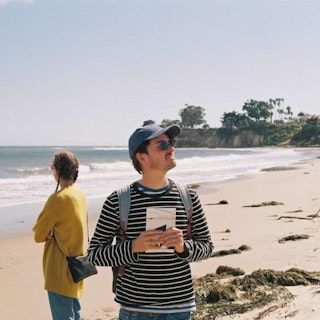Is gaming a safe space for brands to advertise in?
Gaming is an entertainment juggernaut, but marketers have been slow to realize its full promise for brands. Part of that hesitancy is down to brand safety concerns. Gaming communities can be ruthless; slip-ups can be costly; and on gaming platforms, ads can be served alongside unpalatable user-generated content (UGC). For The Drum’s Gaming Advertising Deep Dive, we asked games marketing experts from The Drum Network – is the water safe?

Are gaming environments sage brand spaces? / Moja Msanii via Unsplash
After decades of growth, brands are starting to realize gaming’s potential with an array of ad varieties and formats worthy of one of the world’s most innovative industries. “There’s a new obsession with gaming that every brand marketer has,” says Jodie Fullagar, managing director at M&C Saatchi Sport & Entertainment. “It’s finally gaming’s time to shine.”
Advertisement
But, our panel of gaming marketers points out, a pair of brand safety concerns continue to breed hesitancy in the space.
First, certain sections of the gaming community can be merciless, even brutal, when they smell inauthenticity from advertisers in their space. “Communities don’t forget easily,” says Fullagar. New entrants can fear that a single slip-up, like blood to a shark, could blow their opportunity entirely.
Second, despite the diversification of people who play games, a particular image of ‘gamers’ still looms large: the vitriolic trolls who threw their toys out of the pram during gamergate and continue to lurk in gaming’s more toxic corners. Brands can be dissuaded from picking up the control pad, fearing the bad look of showing up near that kind of content.
Advertisement
All the world’s a game
The second of these concerns (though prevalent) is most easily dealt with, says our panel.
“Gaming’s not a monolith,” says Jeremy Cline, a manager of strategy and insights at VMLY&R. “It’s not just white dudes in their moms’ basements. Their moms are playing too.” So, if a brand wants to avoid the flame wars of gaming’s more competitive scenes, they can simply avoid them. For a start, “not every community is your hyper-competitive League of Legends, or Call of Duty; there are more casual games like Animal Crossing.”
Picking the right game is a good start; tentative brands can even avoid games themselves entirely while still entering the space. As just one example of gaming’s new media universe, Cline cites the latest Roblox x Spotify collab: with Roblox having inaugurated its own musical genre, “an offshoot of hyperpop,” it’s possible to reach that audience on ‘safe’ platforms such as Spotify.
Even with games deemed less safe, including the stratospherically popular but famously toxic League of Legends, brands such as Louis Vuitton have seen real success. The Louis Vuitton strategy, says Ting Zheng, client strategy senior lead at PMG, is to focus on creating “really fascinating and innovative pieces of art,” and reaping the rewards with a massive global reach among a young, diverse and loyal audience.
For these hyper-successful franchises, while in-game advertising and other activations close to UGC can pay dividends, more tentative brands can avoid risk while still plugging in. As Drew Townley, managing director at Kairos Group, says, “when they’re executing campaigns, they’re not in a lobby; they’re doing top-level activations that leverage talent in-game or pro players within a tournament. In that sense, they’re de-risking themselves.” This doesn’t solve the problem of online toxicity, of course – but it does make for a safer route in via established stars and mightily popular esports leagues.
Suggested newsletters for you
A game of trust
The solution to the first problem – the peril of showing up in gaming wrong, and incurring the wrath of the community – is partly solved by the same considerations: finding the right spaces, and de-risking with established stars and franchises. But truly succeeding in the gaming space means earning gamers’ trust, not just ticking off safe wins from the sidelines.
For Visar Statovci, co-founder and managing partner at gaming specialist agency Waste Creative, doing right by the community starts with understanding where they’re coming from. When groups of friends are playing Fortnite, he says, they’re “just hanging out, sans cider cans.” For both players and brands, being in those hangout spaces means “you’re part of the story; you’re having an impact.” To have anyone or anything insert themselves into that environment is “intrusive; it can be as annoying as someone doing that in real life.”
So, while some esports are now doing numbers that IRL sports leagues would kill for, the gaming market remains different from even its closest relatives. In sports, Fullagar says, “there are plenty of opportunities for brands to bowl in, badge and get what they want out of it”; but in gaming, there’s an “expectation to turn up in a much more considered and authentic way ... and to give back.”
In this sense, Cline says, it can pay dividends to approach specific gaming communities as one would communities in social: go in with authenticity as the one non-negotiable and understand that the rewards will be tied to authentic contributions to that community. As Statovci says, the key is ensuring that “everything we do comes from deep understanding of the communities in the games we work with.”
For more on all the different ways brands can advertise in gaming, from virtual billboards to product placements, social lenses and even games of their own, check out The Drum’s Gaming Advertising Deep Dive.
Content created with:

M&C Saatchi Group
We are a creative company with five specialist Divisions, connected through data, technology and culture, to deliver Meaningful Change for clients.
Find out more
VML
VML is a leading creative company that combines brand experience, customer experience, and commerce, creating connected brands to drive growth. VML is celebrated...
Find out more
PMG
PMG is a global independent marketing services and technology company that seeks to inspire people and brands that anything is possible. Driven by shared success,...
Find out more
Kairos Group
Led by experts with more than 100+ years of gaming and media industry knowledge, Kairos Group comprises multiple entities including Kairos Media, Kyma Media and...
Find out more
Waste Creative
Waste is an independent creative agency founded in 2006. We connect entertainment brands with their fans, to drive creativity, culture and commercial success. A...
Find out more
